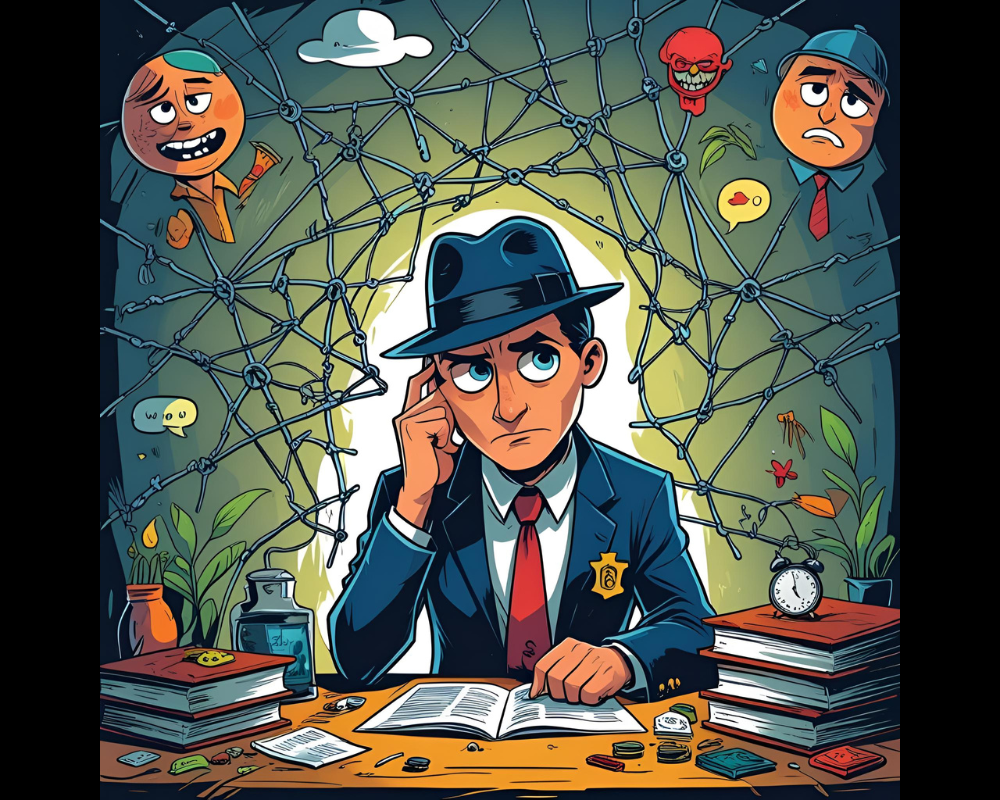
The Law Does Not Require Absolute Certainty
In every murder trial, the prosecution carries the burden of proof. But what does it really mean to “prove guilt beyond a reasonable doubt”? The answer is often misunderstood—by the public, by media pundits, and sometimes even by jurors.
Let’s get something clear: the law does not require absolute certainty to convict someone of murder. Nor does it require that every mystery be unraveled or every piece of the puzzle be perfectly in place. What the law demands is that jurors reach a level of moral certainty—firm, unwavering belief in the defendant’s guilt based on the evidence presented.
In the Karen Read trial, the term “reasonable doubt” has been mentioned thousands of times across media coverage and social media commentary. To follow trial commentary and analysis more meaningfully, it helps to understand how “reasonable doubt” relates to “beyond all reasonable doubt”. This distinction matters—especially in a criminal case.
If you’re looking for a clear, straightforward explanation of what reasonable doubt really means (and what it doesn’t mean), check out this article:
💡Understanding Reasonable Doubt in Criminal Trials: What It Is—What It’s Not
What “Beyond a Reasonable Doubt” Means in Massachusetts
In Massachusetts, judges are required to give a specific instruction to jurors about this burden of proof. The Supreme Judicial Court of Massachusetts has long held that “proof beyond a reasonable doubt is proof that leaves you firmly convinced of the defendant’s guilt.” It’s not proof beyond ALL doubt—just beyond any reasonable one.
As stated in Commonwealth v. Webster (1850), a foundational case in Massachusetts criminal law, jurors must be satisfied “to a moral certainty” and that the evidence must “exclude every other reasonable hypothesis except that of the guilt of the defendant.” However, this does not mean excluding every possible or imagined doubt.
Jurors are not required to:
Solve every unanswered question
Account for every gap in the timeline
Or be 100% certain of how the crime happened.
Instead, they must be satisfied that the essential elements of the crime have been proven—intent, causation, and the defendant’s actions—beyond a reasonable doubt.
Minor inconsistencies, gaps in memory, or unproven theories may be frustrating, but they do not invalidate a strong case grounded in reliable evidence.
Real-World Implications
Imagine a murder case where the body is found, the cause of death is clear, and evidence strongly implicates the defendant—DNA, motive, and witness testimony. But maybe the exact time of death is debated. Or perhaps there’s no confession. These missing pieces might create doubt—but are they reasonable?
According to Massachusetts law, reasonable doubt must arise from the evidence—or lack thereof—not from imagination or sympathy. Jurors are told not to conjure doubt just to avoid a tough decision.
The Bottom Line
In Massachusetts, and across the U.S., criminal law recognizes that no case is ever perfect. The standard of “beyond a reasonable doubt” is high, as it should be when someone’s liberty or life is at stake. But it’s not perfection. It’s conviction grounded in reason, common sense, and the totality of the evidence.
As the judge might say from the bench: you are not required to leave your common sense at the courthouse door.

Applying the Concept of Beyond Reasonable Doubt in the Karen Read Case
When it comes to the Karen Read case, the concept of reasonable doubt is at the center of nearly every debate. Yes, there are legitimate concerns about aspects of the investigation—like blood evidence collected in solo cups or questions surrounding chain of custody for certain items. There are allegations of evidence planting and law enforcement corruption in this case. Officers have even been terminated as a result, but for behavioral and ethical issues.
These are not minor details, and they deserve scrutiny. But the key question is: do these lapses rise to the level of reasonable doubt about Karen Read’s guilt?
And in this case, the prosecution isn’t leaning heavily on DNA. Their core argument is built on digital evidence, the tail light, his injuries, time-stamped data, and—critically—Karen Read’s own words and actions before and after John O’Keefe’s death.
Reasonable doubt doesn’t mean any doubt or perfect police work.
It means jurors must weigh whether the totality of the evidence leaves them with an abiding conviction of guilt.
A jury shouldn’t toss out a mountain of circumstantial and digital evidence simply because some investigative procedures were flawed. Reasonable doubt has to relate directly to whether the defendant committed the crime—not whether the investigation was perfectly executed.

Massachusetts Model Jury Instruction on Reasonable Doubt
“The burden is on the Commonwealth to prove beyond a reasonable doubt that the defendant is guilty of the charge(s) made against him (her).
What is proof beyond a reasonable doubt? The term is often used and probably pretty well understood, though it is not easily defined. Proof beyond a reasonable doubt does not mean proof beyond all possible doubt, for everything in the lives of human beings is open to some possible or imaginary doubt.
A charge is proved beyond a reasonable doubt if, after you have compared and considered all of the evidence, you have in your minds an abiding conviction, to a moral certainty, that the charge is true. When we refer to moral certainty, we mean the highest degree of certainty possible in matters relating to human affairs–based solely on the evidence that has been put before you in this case.
I have told you that every person is presumed to be innocent until he or she is proved guilty, and that the burden of proof is on the prosecutor. If you evaluate all the evidence and you still have a reasonable doubt remaining, the defendant is entitled to the benefit of that doubt and must be acquitted.
It is not enough for the Commonwealth to establish a probability, even a strong probability, that the defendant is more likely to be guilty than not guilty. That is not enough. Instead, the evidence must convince you of the defendant’s guilt to a reasonable and moral certainty; a certainty that convinces your understanding and satisfies your reason and judgment as jurors who are sworn to act conscientiously on the evidence.
This is what we mean by proof beyond a reasonable doubt.”
This instruction emphasizes that while absolute certainty isn’t required, the jurors must be firmly convinced of the defendant’s guilt based on the evidence presented.
Related Articles
Related
Judge Garnett Warns DOJ: Public Comments May Violate Court Rules in Mangione Case
New York, September 24, 2025 — In a scathing order issued today, U.S. District Judge Margaret M. Garnett ruled that officials at the Department of Justice may have breached court rules by making public statements about Luigi Mangione’s case — statements that defense...
Terrorism Charges Dropped for Luigi Mangione
On September 16, 2025, a New York judge (Gregory Carro) dismissed two terrorism‐related murder charges against Luigi Mangione. Specifically, the charges struck were: ➤First-degree murder in furtherance of terrorism under state law. ➤Second-degree murder as a crime of...
Why Karen Read’s $1.4M Prosecution Expense Is Justified
When Norfolk County released invoices showing that Karen Read’s second trial cost taxpayers more than $1.4 million, critics pounced. But is that number really excessive? Not when you compare it with other high-profile, expert-heavy prosecutions. Here’s why the expense...


0 Comments